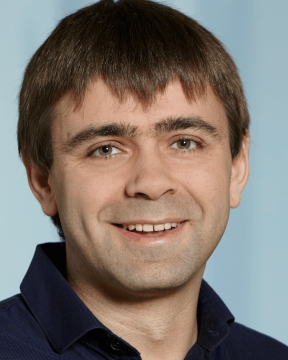 |
Dr. Maksym KovalenkoETH ZurichEngineering Single-particle And Collective Light Emission From Lead Halide Perovskite Nanocrystals Kanatzidis International Symposium (4th Intl. Symp. on Materials/Solid State Chemistry and Nanoscience for Sustainable Development) Back to Plenary Lectures » |
Abstract:Colloidal lead halide perovskite (LHP) nanocrystals (NCs), with bright and spectrally narrow photoluminescence (PL) tunable over the entire visible spectral range, are of immense interest as classical and quantum light sources. Fast (bright) and statistically pure single-photon emission is key for many quantum technologies, from optical quantum computing to quantum key distribution and quantum imaging. The brightness of an emitter is ultimately described by Fermi’s golden rule, with a radiative rate proportional to its oscillator strength (intrinsic emitter property) times the local density of photonic states (photonic engineering, i.e. cavity). With perovskite NCs, we present a record-low sub-100 ps radiative decay time for CsPb(Br/Cl)3, almost as short as the reported exciton coherence time, by the NC size increase to 30 nm. The characteristic dependence of radiative rates on QD size, composition, and temperature suggests the formation of giant transition dipoles, as confirmed by effective-mass calculations for the case of the giant oscillator strength. Importantly, the fast radiative rate is achieved along with the single-photon emission despite the NC size being ten times larger than the exciton Bohr radius. NC self-assembly is a versatile platform for materials engineering, particularly for attaining collective phenomena with perovskite NCs, such as superfluorescence in perovskite NC superlattices. Thus far, LHP NCs have been co-assembled with building blocks that acted solely as spacers to promote the tuning of the mutual arrangement of LHP nanocubes [2]. However, the functionality of the second SL component can give rise to the enhancement of the LHP NCs properties or the emergence of new collective effects. We present the formation of multicomponent SLs made from the CsPbBr3 NCs of two different sizes. The diversity of obtained SLs encompassed the binary ABO6-, ABO3-, and NaCl-type structures, all of which contained orientationally and positionally confined NCs. For the selected model system, the ABO6-type SL, we observed efficient NC coupling and Förster-like energy transfer from strongly confined 5.3 nm CsPbBr3 NCs to weakly confined 17.6 nm CsPbBr3 NCs. Exciton spatiotemporal dynamics measurements reveal that binary SLs exhibit enhanced exciton diffusivity compared to one-component SLs across the entire temperature range (from 5 K to 298 K). Observed incoherent NC coupling and controllable excitonic transport within the solid NC SLs hold promise for potential applications in optoelectronic devices. We also will present a novel library of phospholipid-based capping ligands for LHP NCs [4]. |
|